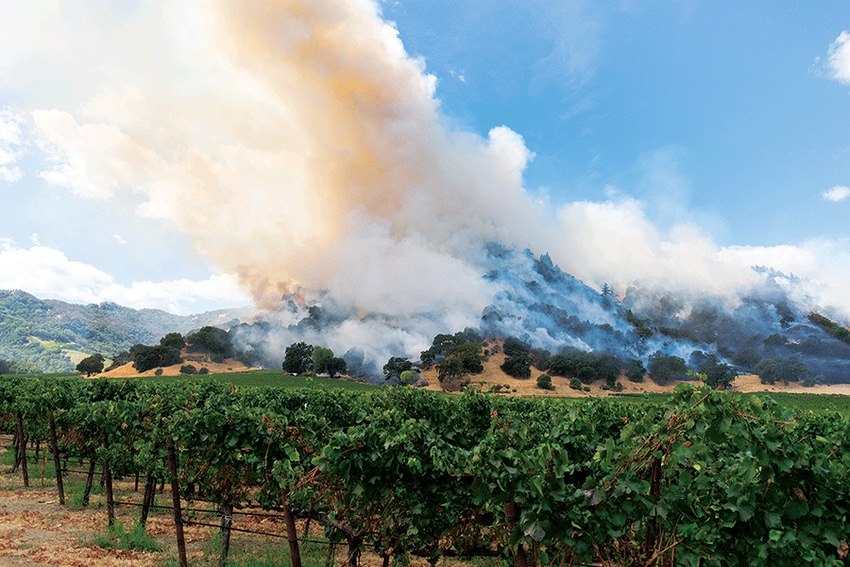
Wildfire-weary vintners in California’s Lake County are reassuring their customers that the latest round of flames to sweep through the area — the Mendocino Complex Fires — have so far mostly steered clear of vineyards.
Since earlier this month, the fires shifted into remote forest wildlands about 15 miles to 30 miles north of vineyards, the Lake County Winegrape Commission reports. Further, as of Aug. 8, thousands of residents were allowed to return to their homes as evacuation orders were mostly lifted, a panel news release says.
The county’s winegrape growers say they’re glad to see people back in their homes and back to work, enabling things to return to somewhat normal.
Damage to the county’s wine industry remains very limited and extremely isolated, with only about 0.05 percent of all planted acres of vines seeing burns, the commission reports.
SERVED AS FIREBREAKS
As they have with other fires, including last autumn’s wine country blazes, vineyards provided firebreaks because of the cultivation of the land and the moisture that is held in the wine canopy. Firefighters used vineyard agricultural ponds and nearby lakes to supply water for their efforts.
“We at the Lake County Winegrape Commission worked closely with local officials to ensure real-time updates of the fire for the safety of our vineyard workers and properties,” commission president Debra Sommerfield said in a statement.
“Lake County grape growers are deeply grateful to all first responders for their tireless efforts to protect our residents and our communities, and we are thankful to be able to report that direct impact to our industry was minimal.”
Perhaps the biggest concern for wine producers throughout California has been the possible effects of smoke plumes on grapes. Unlike other agricultural products, the skins of grapes are permeable, so free volatile phenols created by burning wood become part of the grape itself, the University of California Cooperative Extension explains.
WINDS EASED SMOKE CONCERNS
In Lake County, smoke plumes from the Mendocino Complex Fires have remained in remote northern wildland areas, far from major winegrowing regions, the commission reports. The smoke pockets have been pushed away by prevailing winds, with morning haze blown out by midday breezes.
Elsewhere on the North Coast, sparkling winemakers have been hopeful that smoke taint wouldn’t be much of a problem, partly because smoke has mostly remained high above the ground, according to Wine-Searcher, an industry database and news site.
For Lake County, this is the third year of the last four that a midsummer wildfire has swept through the area, burning or threatening farmland. In 2016, the nearly 4,000-acre Clayton Fire destroyed more than 100 homes, and burned a winery as well as vineyard, walnut, and grazing land. This, only a year after a pair of fires in 2015 burned more than 145,000 combined areas in Lake, Yolo, and Colusa counties.
PART OF ECOSYSTEM
The county’s winegrape commission notes that wildfire has become part of the ecosystem throughout much of the West Coast. Citing the 2017 U.S. Geological Survey, Paul Steblein, a USGS fire science coordinator, says in the release that “human-caused ignitions, warmer temperatures, dry and wet spells, and accumulation of fuels are some of the factors contributing to longer wildfire season, increases in the number of large and long-duration fires, and more severe effects from the wildfires.”
To help with fire relief efforts, the commission suggests that donations be made to North Coast Opportunities at https://www.ncoinc.org/ or Rotary 5130 Fire Relief Fund at https://www.larca5130.org/
About the Author(s)
You May Also Like






